In 2014 we visited Oaxaca, Mexico, for a long weekend with our friends Amity & Antonio. Although our stay was brief, Oaxaca has so much to do and see that we had days full of fascinating experiences. I love ancient cultures and I’ll make a point to visit as many ruins and I can find. In Oaxaca it’s the ancient Zapotec people that provide the history.
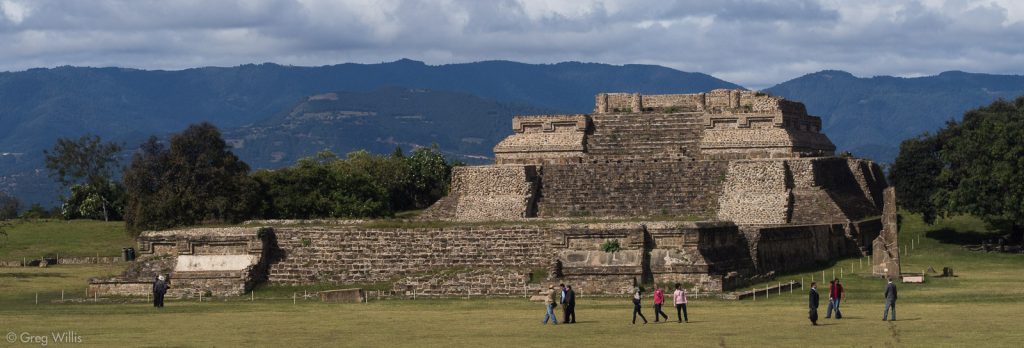
Although it doesn’t get as much attention as the Aztec or the Mayan cultures, the Zapotec culture manages to be just as impressive, although at a smaller scale. The Zapotecs lived in the Oaxaca valley and their earliest settlement dates from 700 BCE. Monte Alban is their most important city, but other towns are scattered throughout the area.
One morning we toured Monte Alban, then the next day we drove down the Tlacolula Valley and visited Yagul & Mitla, along with some other sights.
Monte Alban
Monte Alban impresses. Situated atop a hill in the middle of the valley, the site is centered around an expansive plaza surrounded by buildings and anchored at the north and south ends by large platform structures. Both of these platforms have impressive stairs and are topped by their own buildings.

Monte Alban peaked 300-700 CE, although the earliest signs of settlement here start around 500 BCE, and was abandoned soon after, around 750 CE. You can do the math — that’s over a thousand years of occupation. The Zapotec people did not build the whole thing at once, but in phases throughout their occupation.
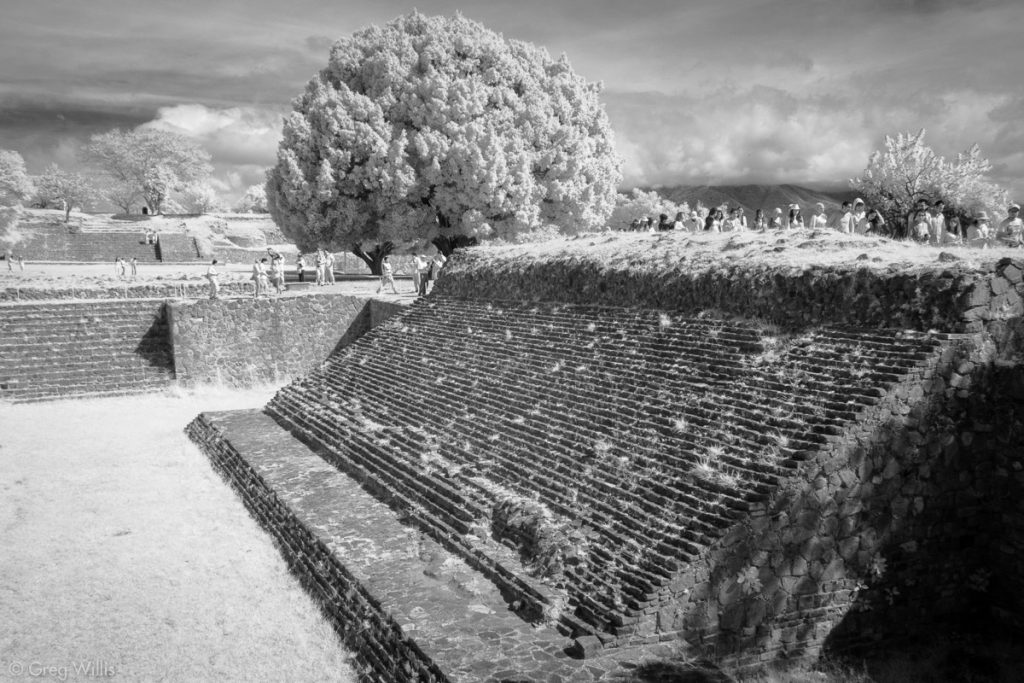
Monte Albán Ballcourt 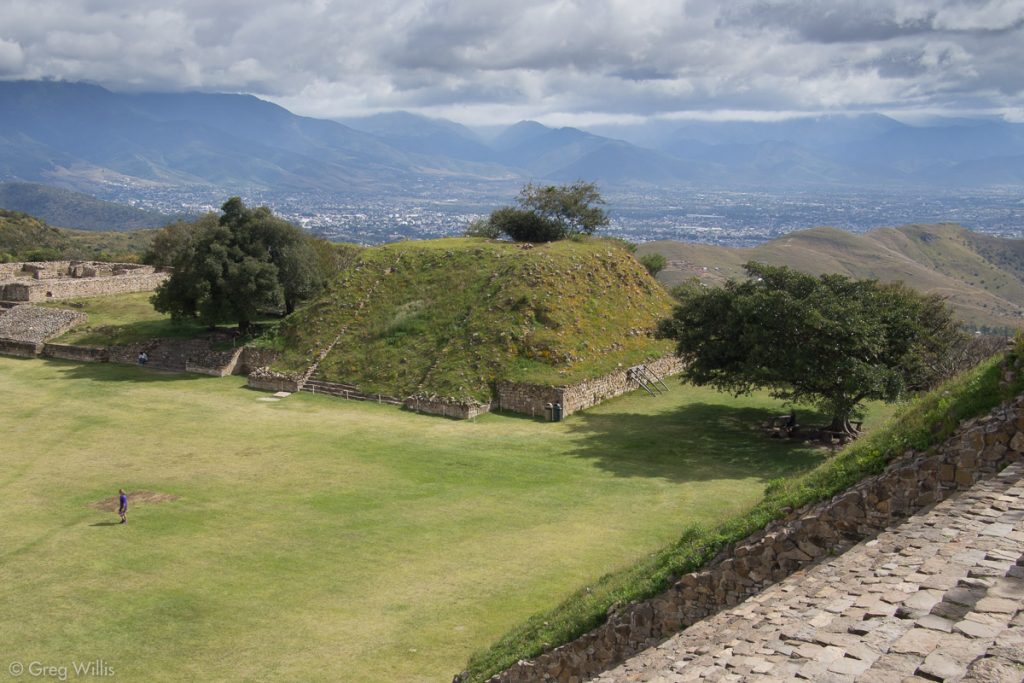
Monte Albán Montículo Q and Oaxaca city from the South Platform 
Monte Albán Pyramid on the South Platform 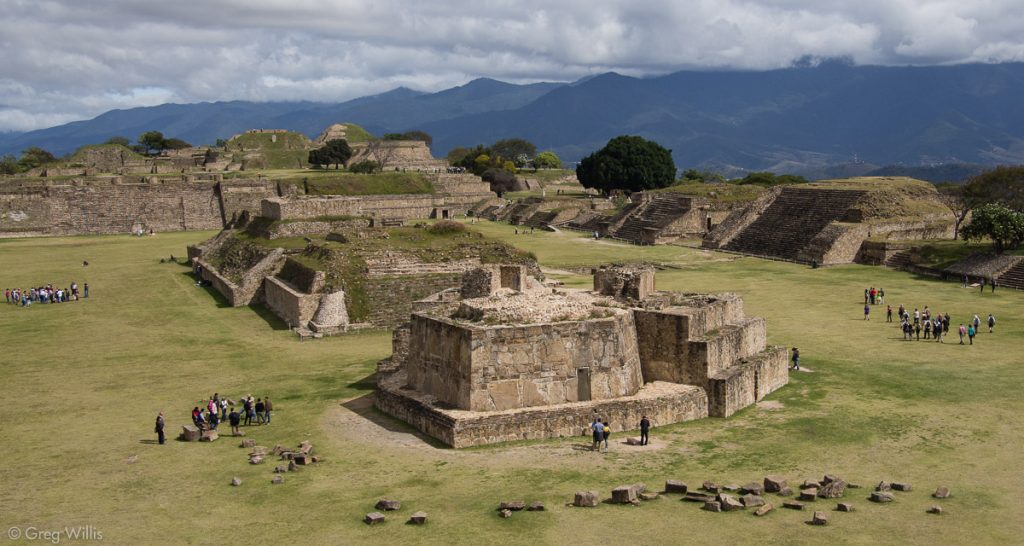
Monte Albán Gran Plaza from the South platform, Edificio J in front 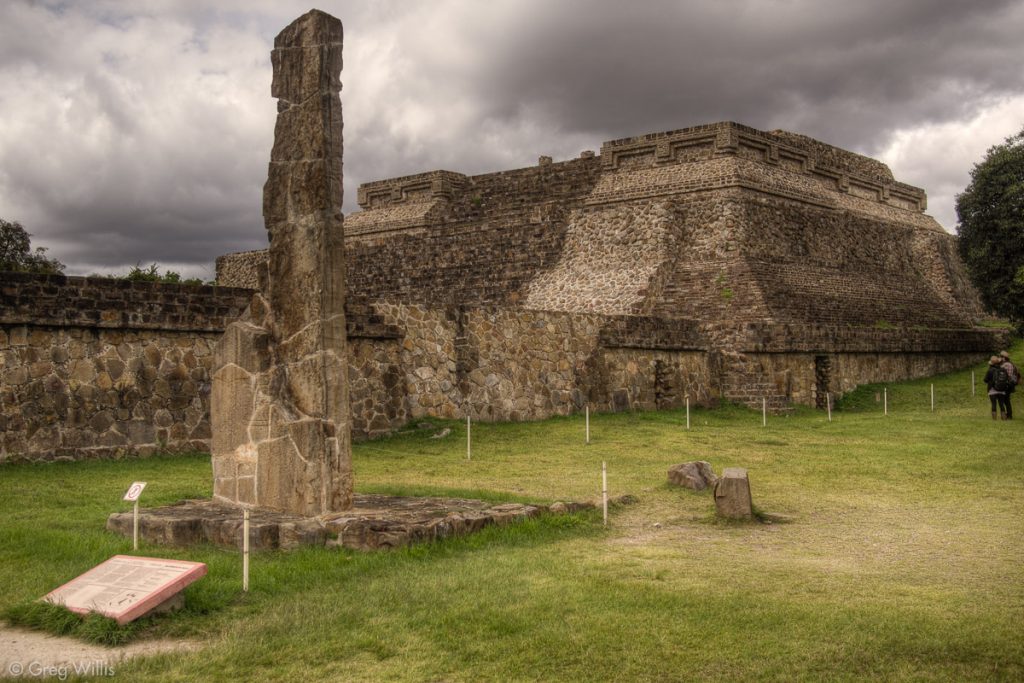
Monte Albán Sistema IV & Stele 18 
Monte Albán Gran Plaza & Patio Hundido (Sunken Patio) from Edificio E on the North Platform
In addition to the numerous buildings, Monte Alban has many carved stones depicting naked men. Referred to as Danzantes (“dancers), a closer inspection of their contorted and twisted poses reveals some of them to be genitally mutilated. So maybe not so much with the dancing.
On site there’s a nice museum displaying some of the Danzantes along with other depictions in ceramic and stone.
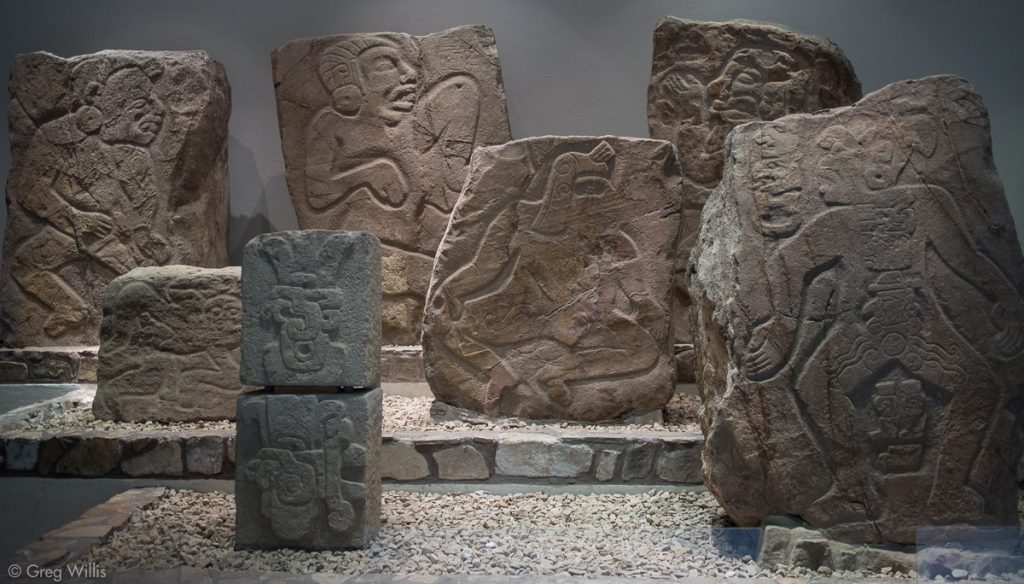
- Date: Sat 2 Nov 2014
- Why go:
- extensive monumental architecture
- historically important city
- hill-top views of Oaxaca
- impressive museum
Yagul
After they abandoned Monte Alban around 750 CE, the Zapotec people didn’t go far. The Tlacolula Valley stretches east of Monte Alban & Oaxaca. And it’s here that they settled in a number of smaller sites around the valley. Yagul is not the largest of most important of those settlements, but it’s a quaint ruin nestled in the valley. And stands in sharp contrast to the grandeur of Monte Alban.
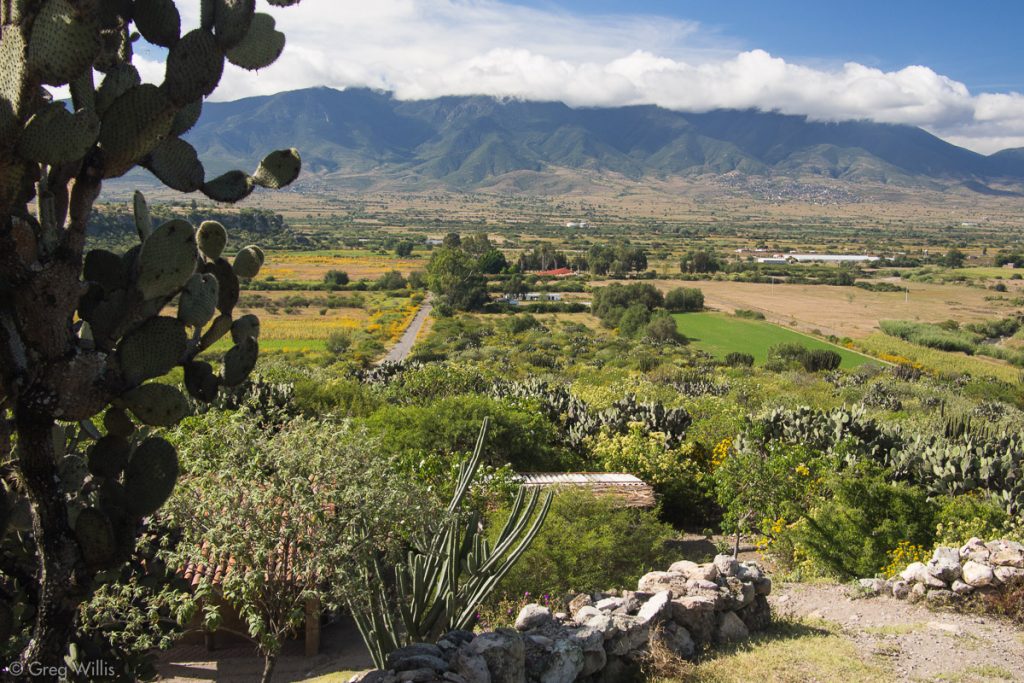
We had the ruins to ourselves and had a great time exploring.
- Date: Sun 2 Nov 2014
- Why go:
- views of Tlacolula Valley
- ballcourt (if you’re into ballcourts)
- good chance of having the ruins to yourself
Mitla
Mitla in many ways stands as a contrast to Monte Alban. It’s is at least as old as Monte Alban, but was never abandoned — it was still occupied when the Spanish arrived in the 1520s. Mitla sits on the valley floor where Monte Alban is perched atop a hill. And while Monte Alban was primarily a political center, religion is what Mitla is all about. Most of the tombs are still here, but the priests who used to burn incense and make sacrifices for the Zapotecs and Mixtecs are of course long gone.
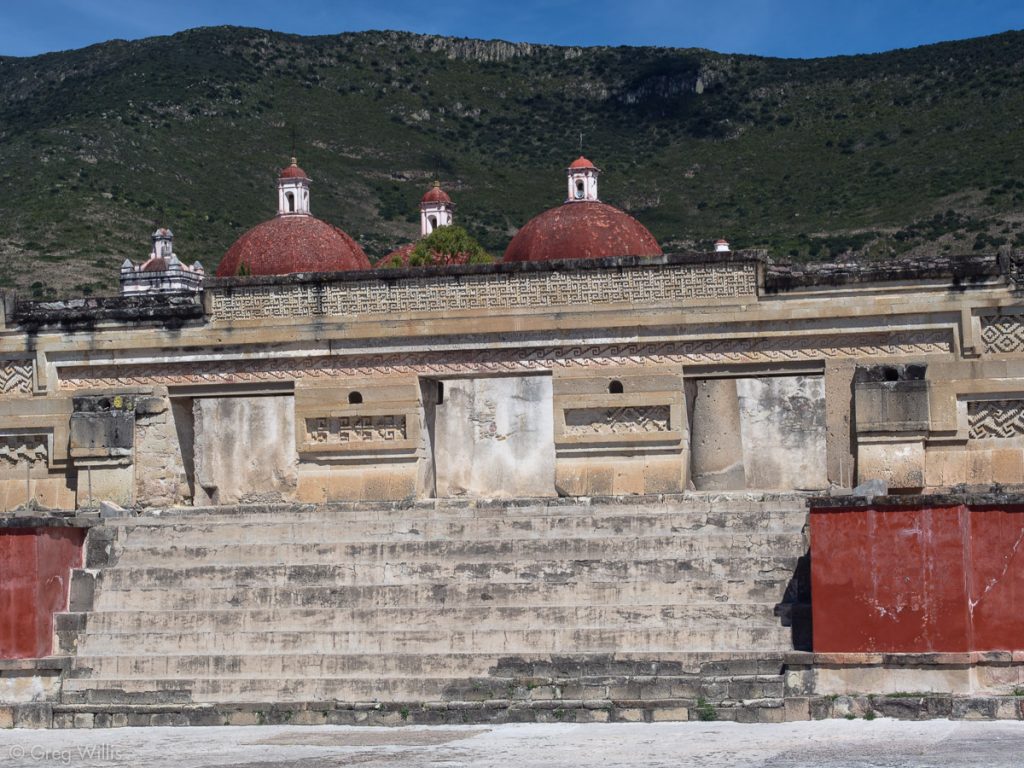
Ruins are found in a number of places throughout Mitla, indeed you have to drive all the way through the modern town to get to these ruins. But the primary sections are next to the parking lot — the Church Group and the Columns Group. You can tell where the Church Group is because the Church of San Pedro sits right in the middle of it. It was built on a ancient platform so the lord and lady of the underworld, who were believed to live in this section, would stay put.
But it’s the Column Group that seems more connected to the underworld: it’s here where you find the tombs. Some tucked away behind the Hall of Columns, others to the side of a courtyard, and even one through a hole underneath a courtyard. It was these dark places of burial that illustrated the religious nature of Mitla. Monte Alban had no intimate spaces such as these.
As you’ve probably noticed, one of the features that makes Mitla so unique is the geometric friezes found all over the site. These patterns are found nowhere else in the Americas.
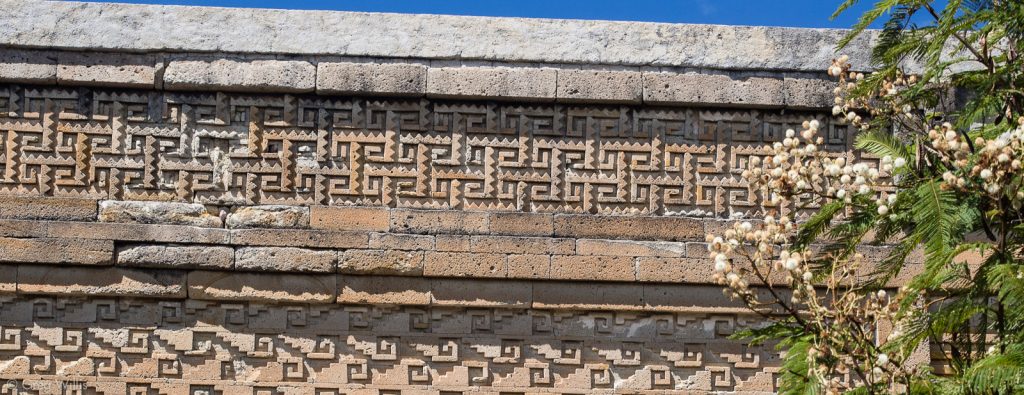
- Date: Sun 2 Nov 2014
- Why go:
- large ruins with many buildings
- historically important city
- creepy dark spaces
- friezes
We missed a couple of other minor ruins along the road, but they’ll just be things we see when we go again. Monte Alban is easy from Oaxaca, but Mitla is worth the effort.
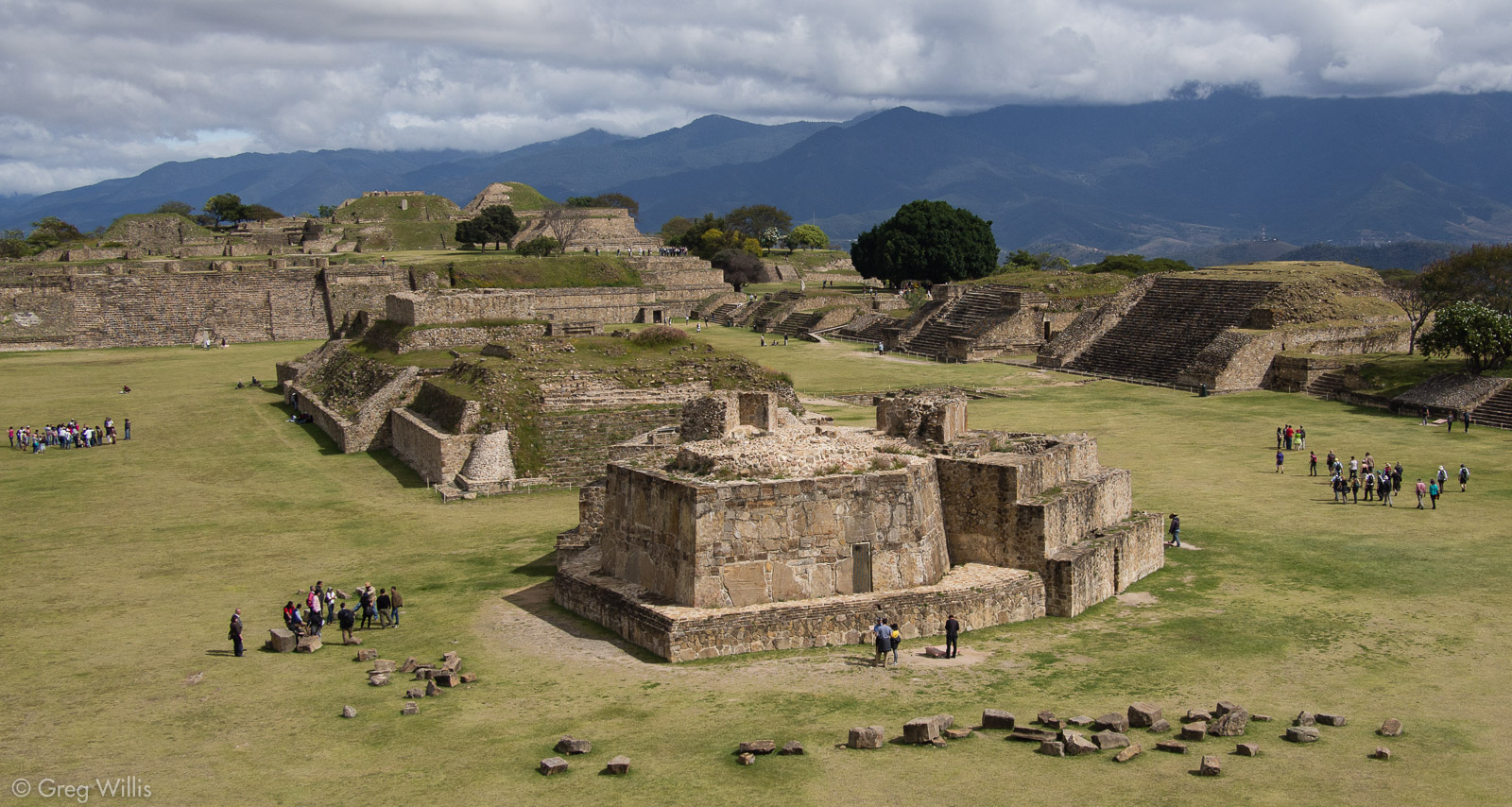
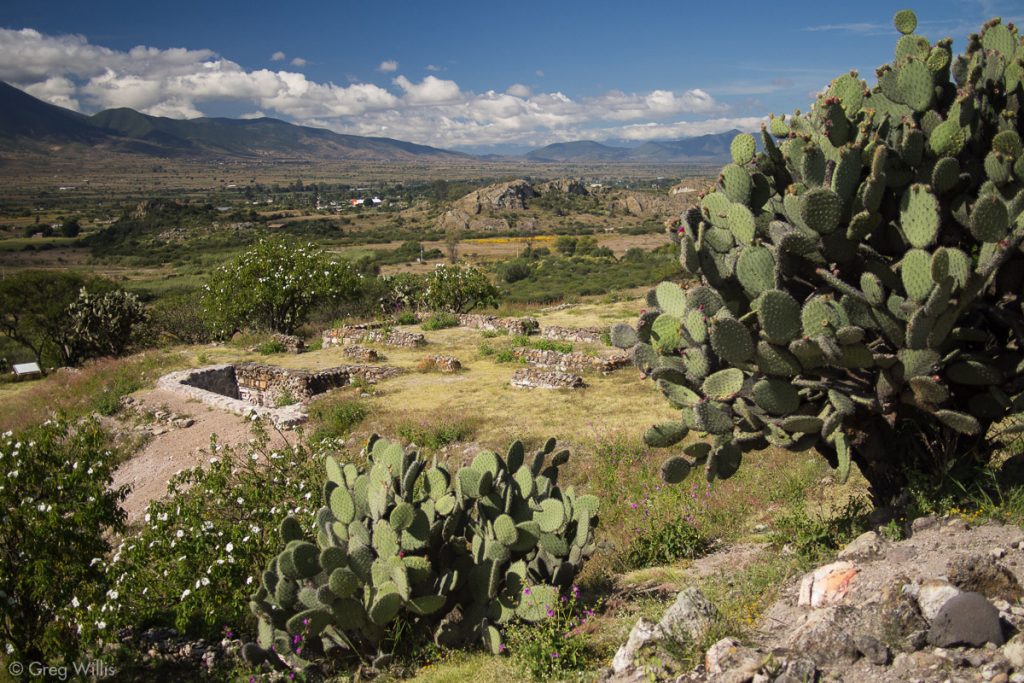
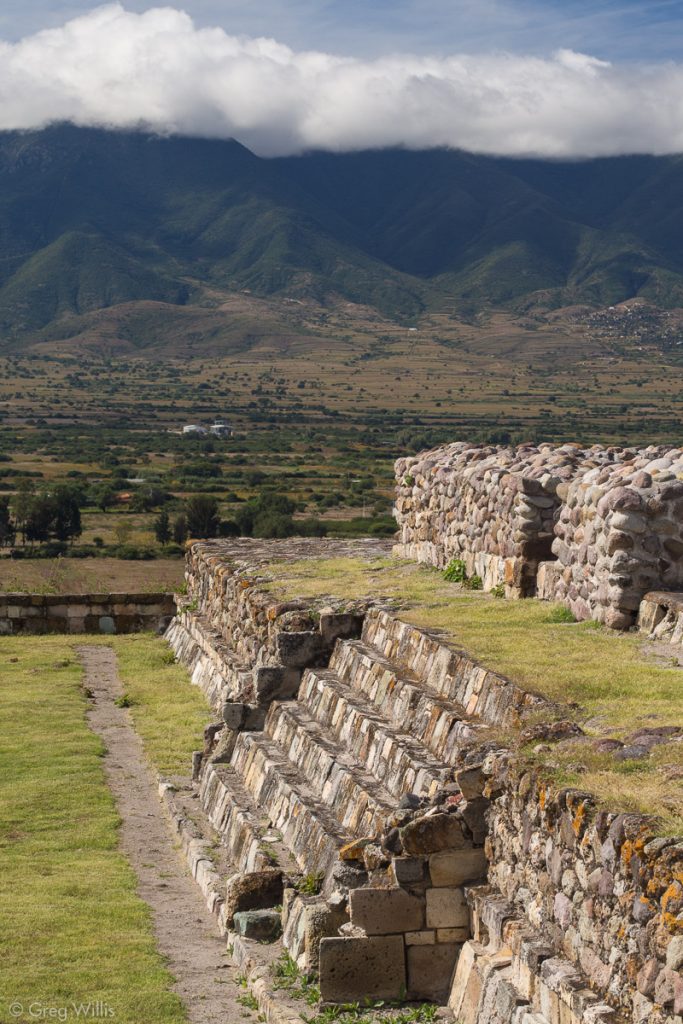
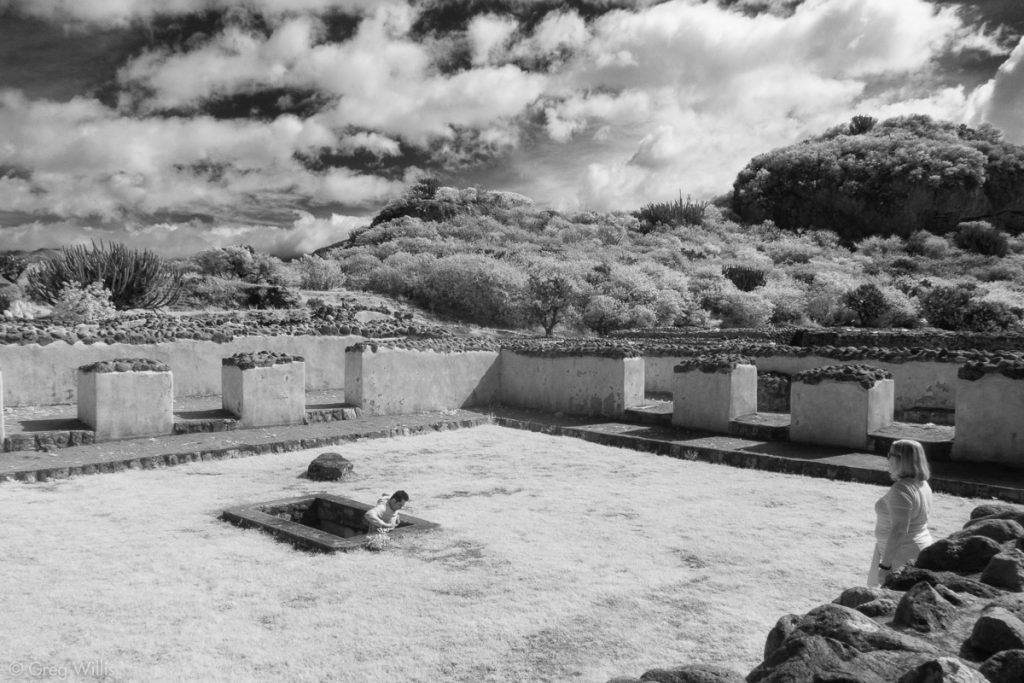

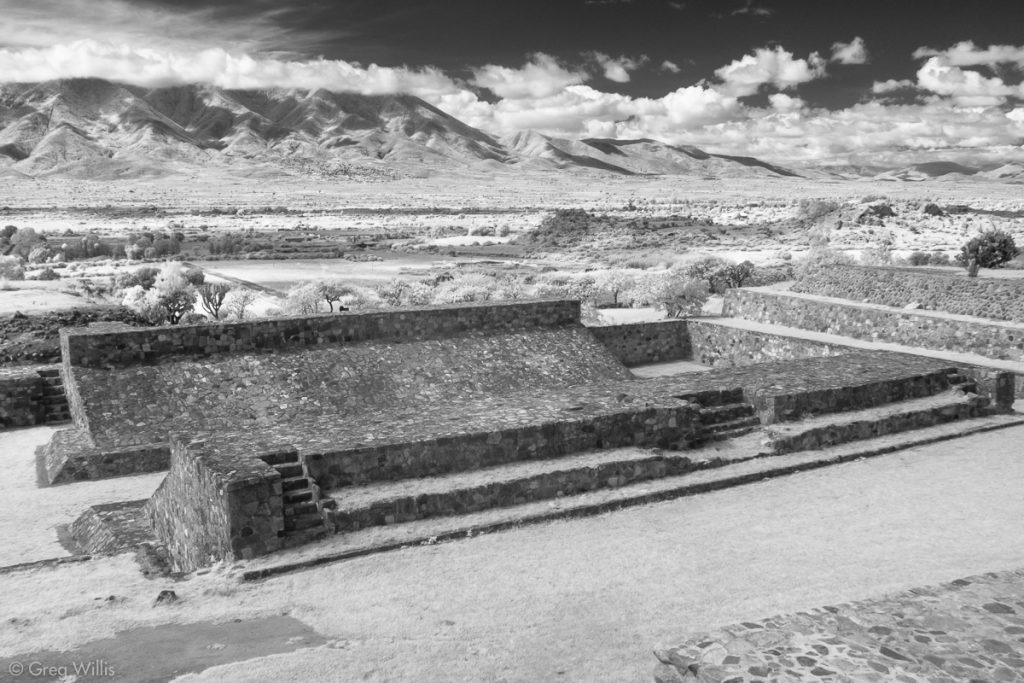
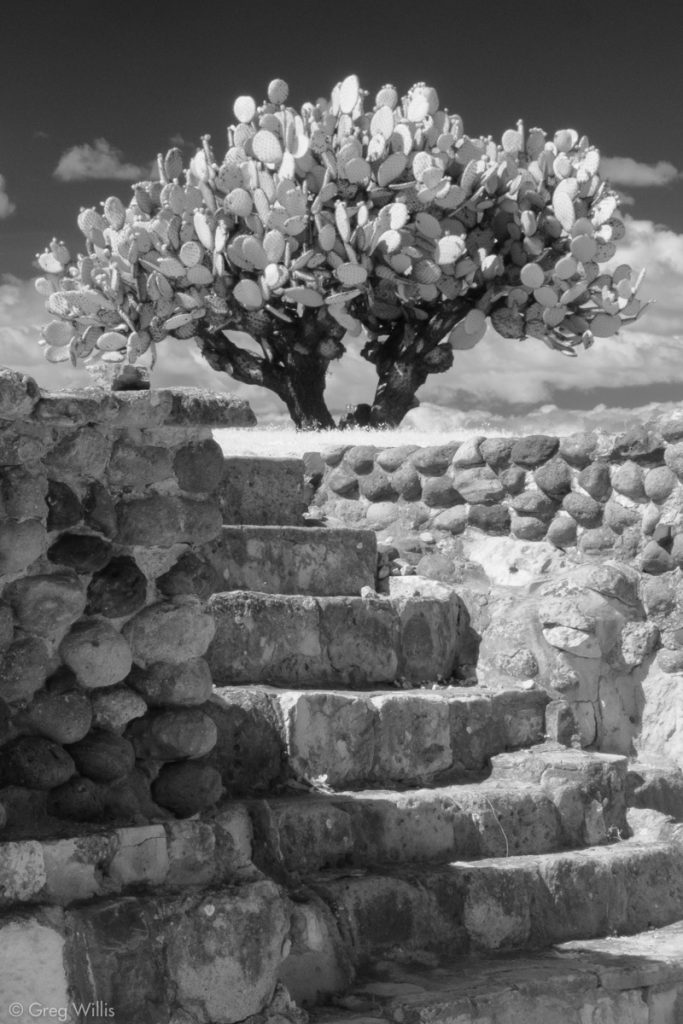
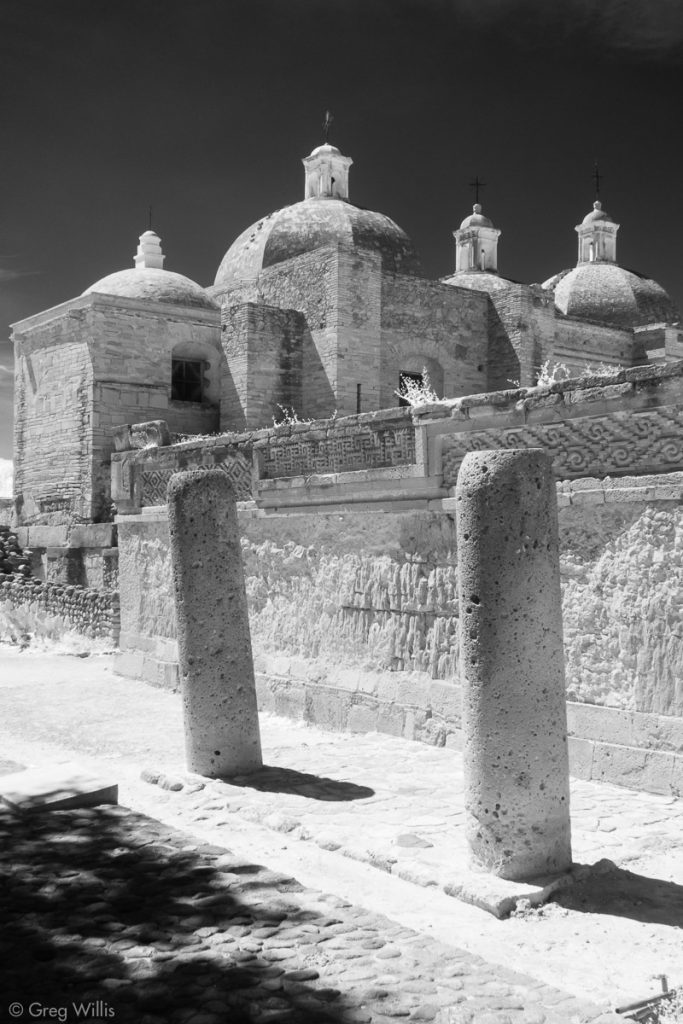
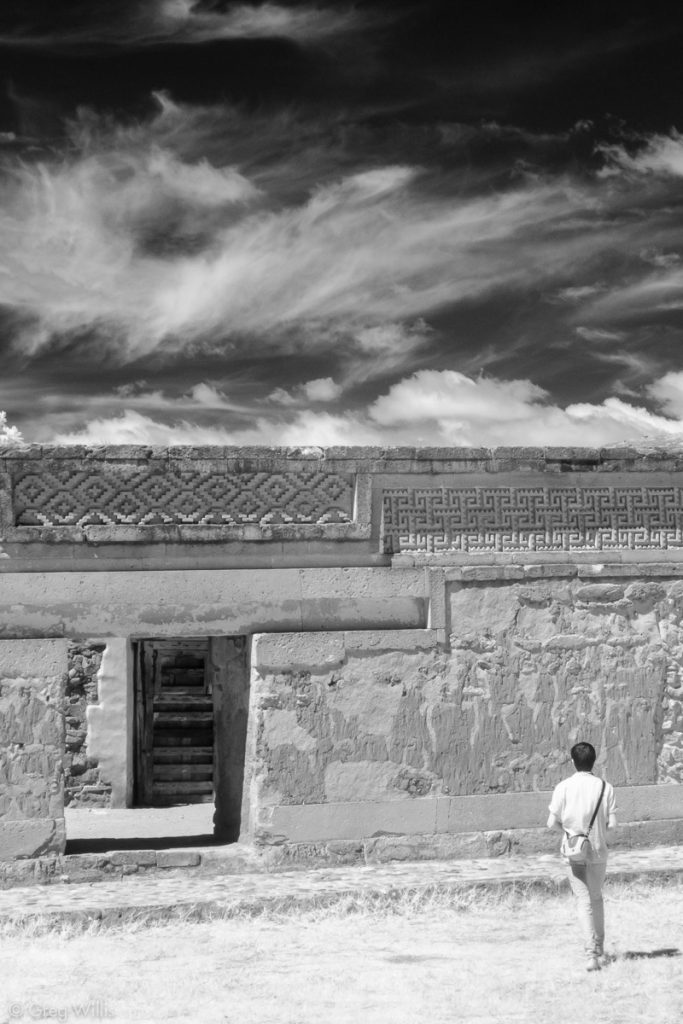
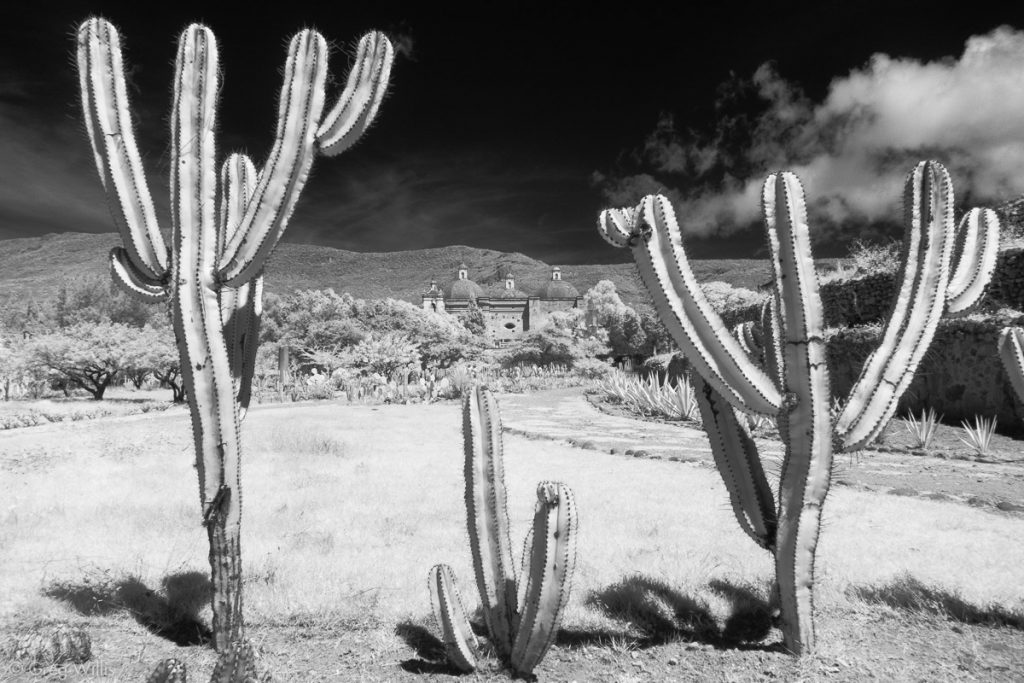
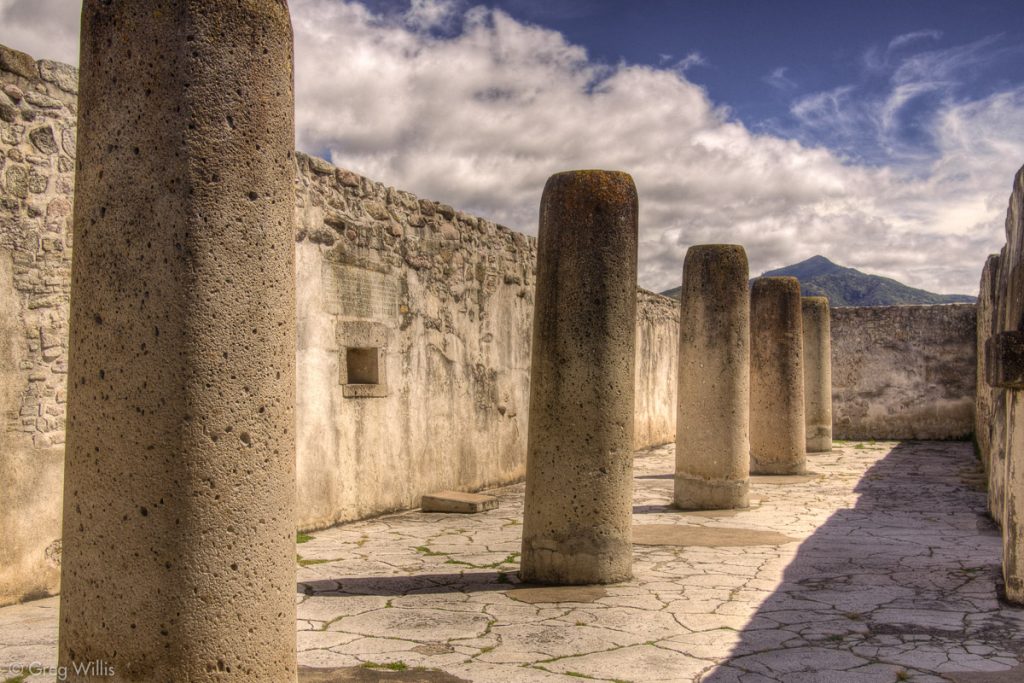
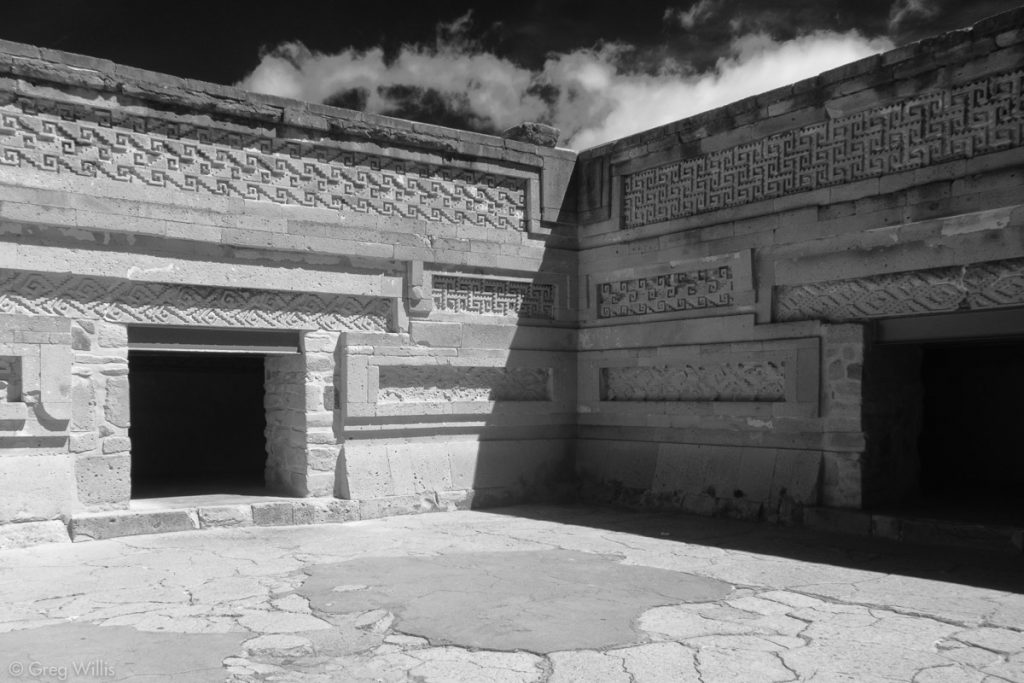
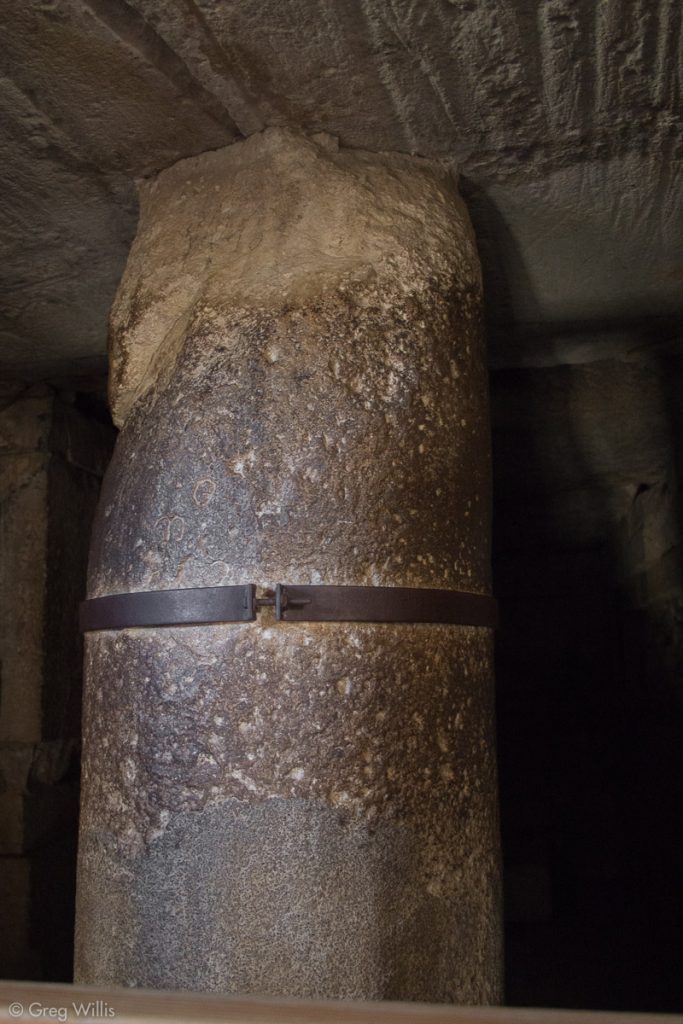
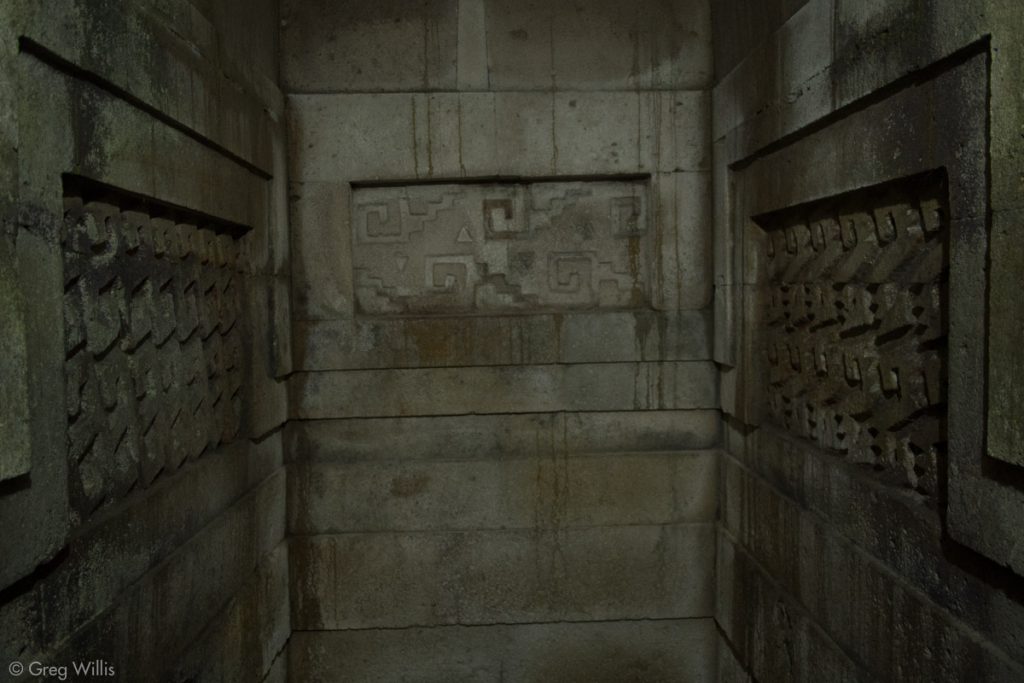
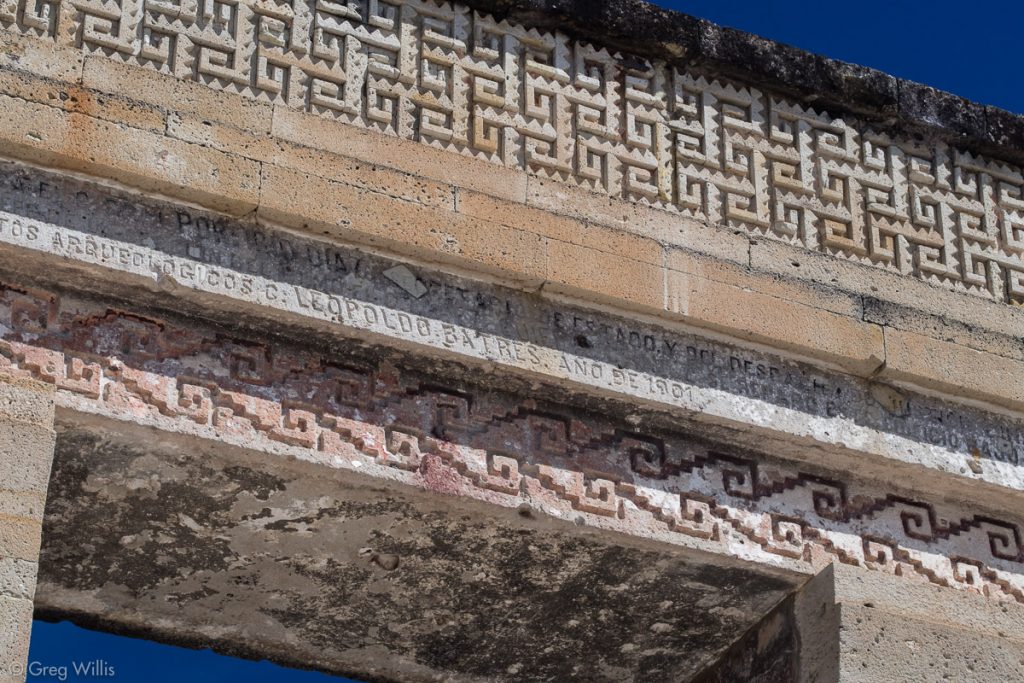
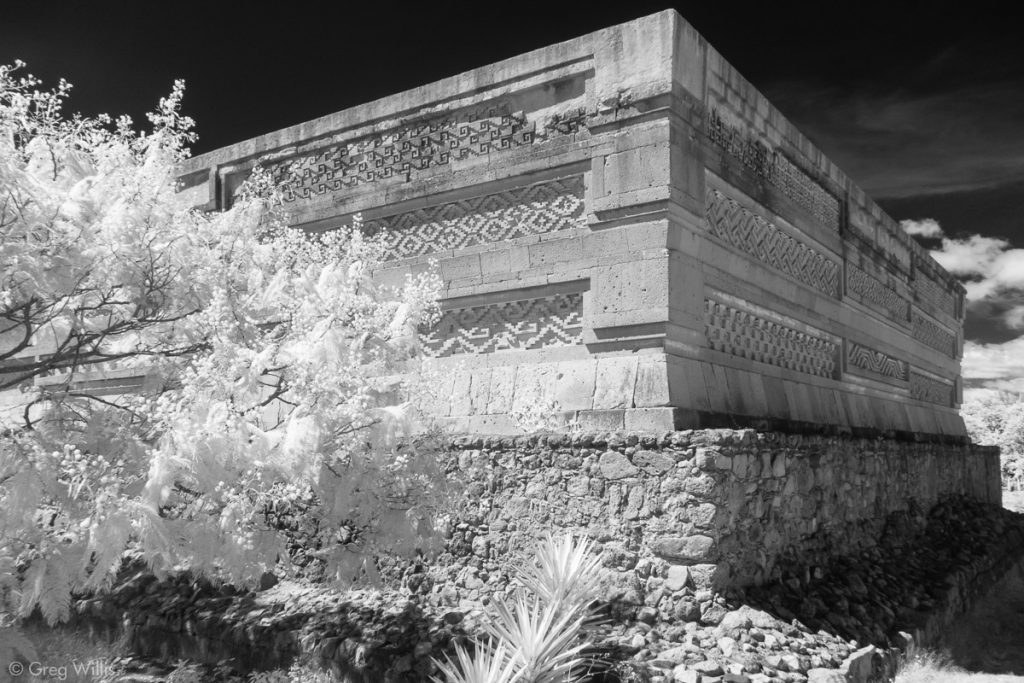
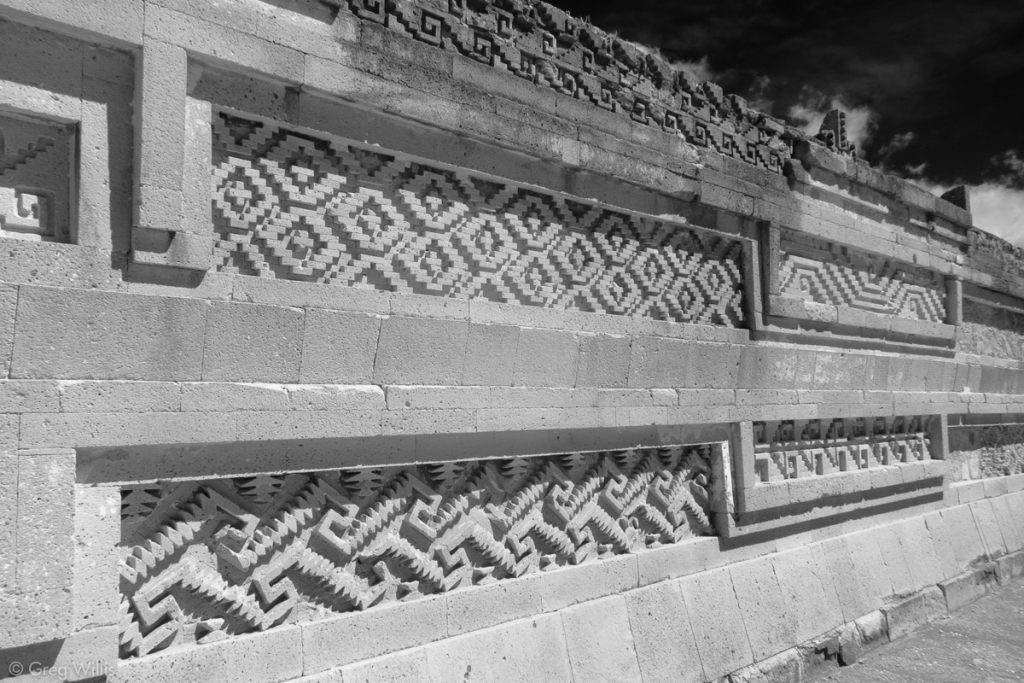
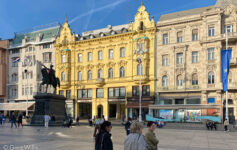

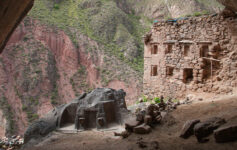

Great pics. I am a big fan of pyramids and ruins. I will need to add Monte alban to my list.